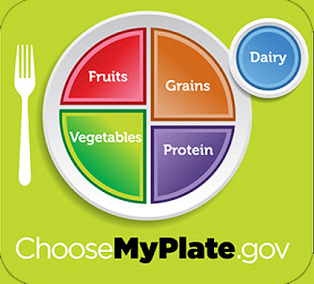Beginning a healthy lifestyle at a young age can have many long-term benefits. Following healthy habits during children’s growing years make it more likely that they will hold onto those healthy habits throughout the rest of their lives.
What’s considered healthy eating?
Healthy eating means consuming a variety of whole and nutritious foods. Foods that contain too much fat and sugar should only be eaten once in a while. Former First Lady Michelle Obama started the MyPlate initiative, which presents a simpler version of the food pyramid. The plate is divided into four sections. Fruits and vegetables should fill half of the plate, and grains and proteins should fill the other half. A small circle to the right of the plate represents dairy as a part of the diet.
What are some of the benefits of healthy eating?
Healthy eating has many advantages. For children it can;
· Stabilize their energy.
· Improve their minds.
· Improve their mental and emotional wellbeing.
· Help them maintain a healthy weight.
· Help prevent chronic health problems, such as heart disease, diabetes, and high blood pressure.
Start with breakfast!
Eating a balanced breakfast with protein is a great way for your child to start his or her day. Kids who eat breakfast tend to eat healthier overall and are more likely to participate in physical activities, which can help maintain a healthy weight. Mornings can be hectic, and that’s ok. It’s important to keep your kitchen and refrigerator stocked with some healthy and quick options. Try one of these on-the-go breakfast options;
· egg sandwich on whole-wheat bread
· Greek yogurt
· peanut butter on whole-grain toast
· hardboiled eggs, toast, and an apple
If you’re looking for something a bit more traditional, consider these suggestions to make sure your kids are getting the breakfast they need.
· stock your kitchen with healthy breakfast options
· prepare as much as you can the night before
· get kids to bed earlier so that everyone can be up 10 minutes earlier
· let kids help plan and prepare breakfast
What not to serve for breakfast is important too. Toaster pastries and some breakfast bars are portable, easy, and appealing to kids but many have no more nutritional value than a candy bar and are high in sugar and calories.
Consider some of these ideas from KidsHealth for healthy breakfast options;
· whole-grain cereal with low-fat milk topped with fruit
· whole-grain waffles topped with peanut butter or ricotta cheese and fruit
· whole-wheat pita stuffed with sliced hard-cooked eggs
· hot cereal topped with nuts or fruit sprinkled with cinnamon, nutmeg, allspice, or cloves
· vegetable omelet with whole-wheat toast
· bran muffin and berries
· sliced cucumbers and hummus in a whole-wheat pita
· lean turkey and tomato on a toasted English muffin
· heated leftover rice with chopped apples, nuts, and cinnamon
· low-fat cream cheese and fresh fruit, such as sliced strawberries, on whole-grain bread or half a whole-grain bagel
· shredded cheese on a whole-wheat tortilla, folded in half and microwaved for 20 seconds and topped with salsa
Starting the day with breakfast can have an impact on academic success. Click here to learn how fueling the body early in the day can help fuel the brain while in class.
I need help providing meals for my children.
Children from families with incomes at or below 130 percent of the poverty level are eligible for free meals through the National School Lunch Program and School Breakfast Program.
The Supplemental Nutritional Assistance Program (SNAP, formerly known as food stamps) provides nutritional assistance benefits to children and families. SNAP helps low income families buy the food they need to maintain good health. You can find out more about SNAP and the programs requirements by clicking here.
